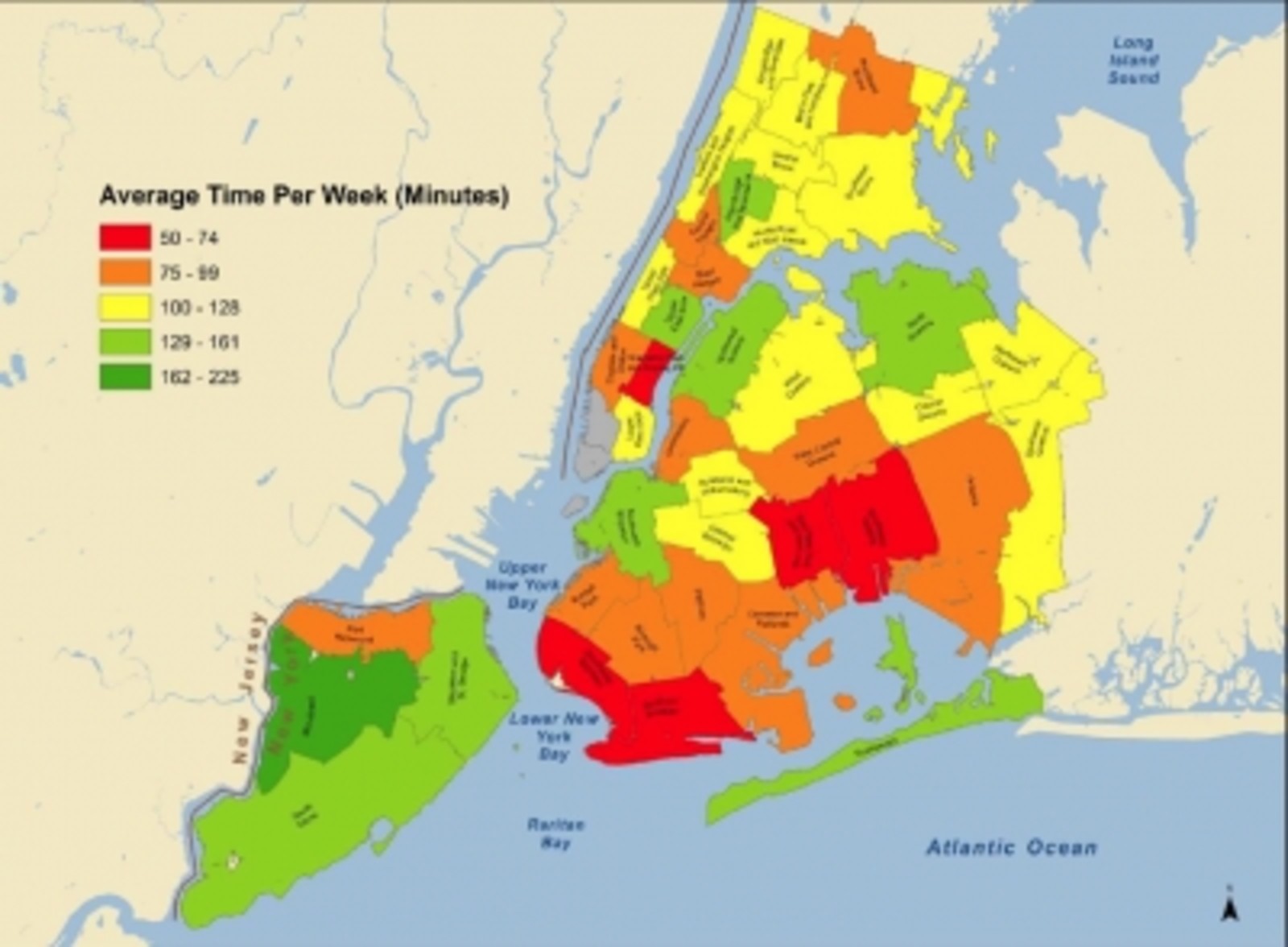City schools score "F" in PE

Six in ten city schools have physical education classes only once or twice a week for 45 minutes, way below what the state education department mandates, according to a new American Heart Association (AHA) report based on a survey of public and charter schools in all five boroughs.
It's the city's youngest students who are most likely to miss out on vital PE time, says the Women's City Club of New York (WCC), a non-profit civic organization, that advocates for more physical education in all schools. Elementary grades do not have enough teachers citywide to meet state PE regulations, based on WCC's analysis of Independent Budget Office data. Yet, according to New York state regulations, the youngest children are supposed to get the most exercise. The rules call for daily physical educaton for grades K-3, three times a week for 4th-6th graders and 90 minutes a week for older students.
Middle school students have enough gym teachers and high schools, which require students to earn two PE credits in order to graduate, have a surplus of PE teachers, according to the IBO data.
The AHA and WCC held a joint press conference Thursday, backed by City Council members Melissa Mark-Viverito, Robert Jackson, Letitia James and Gale Brewer, urging the DOE to bring PE up to state standards. About one in five New York City school children is obese, according to the AHA.
More physical activity is healthy for the body and also the mind, says WCC. "Not only does PE help curb obesity but it increases test scores and grades," said Amy Schwartz, chairperson of the WCC's Task Force on Physical Education in the New York City Public Schools, which has been lobbying the DOE to improve PE for the last few years. Schwartz cited research showing a direct correlation between academic performance and exercise, including a 2009 report released by the DOE and the NYC Department of Health and Mental Hygiene, Childhood Obesity is a Serious Concern in New York City, linking physical fitness to improved test scores.
DOE spokesperson Marge Feinberg said the DOE "shares the Women's City Club's goal of having all students receive high quality PE that meets State requirements." But, she said, the report was "factually incorrect." The WCC and IBO findings "significantly undercount[s] the elementary school teachers who are appropriately teaching physical education."
In schools where there are no designated gym teachers, classroom teachers find time to incoporate physical activity. Feinberg mentioned the DOE's "Move-to-Improve" program, for which teachers weave "fitness breaks" into their classroom schedule and which count toward filling the state-mandated PE time. The DOE says it also offers training for space-challenged schools called "No Gym? No Problem!"
Schwartz argues that PE should be "a well-developed curriculum" requiring moderate to vigorous exercise, taught by licensed phys ed teachers.
Another problem is that schools that share buildings, or are housed in non-traditional space, have restricted access to gymnasiums. Tight budgets mean schools have to weigh the benefits of hiring a PE teacher against other budgetary needs, like arts education. Feinberg said the decision whether to hire a PE teacher is school-based and not regulated by the DOE.
The WCC is asking the DOE to develop a system to take inventory of the PE in city schools and "establish a curriculum that recognizes the contribution of regular physical education to [students'] academic achievement."
More than a year ago, an audit from of city schools by Comptroller John Liu revealed that most elementary schools do not meet state laws for PE classes. The DOE "failed to follow its own recommendations for fighting high rates of childhood obesity," Liu announced, pointing to the DOE's 2009 report. WCC said the city has not updated it's district PE plan since the early 80s, despite promises to do otherwise following the Comptroller's audit.
Please Post Comments